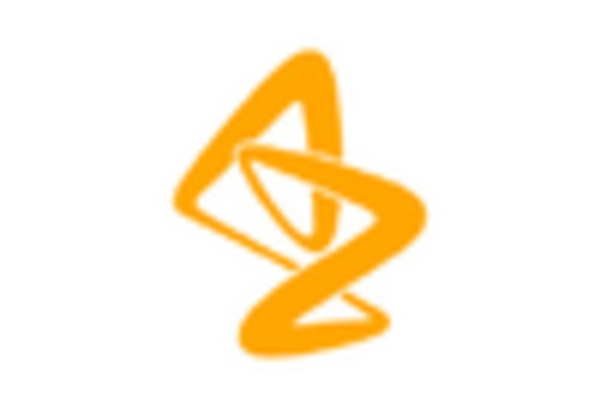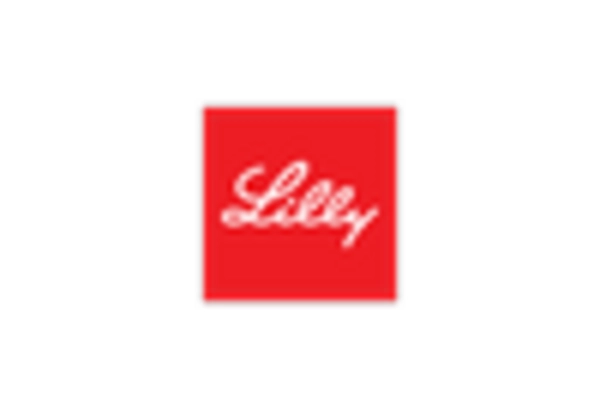Rising Awareness and Education
Increased awareness and education surrounding mental health issues are driving growth in the Schizophrenia Drug Market. Campaigns aimed at destigmatizing mental illness have led to more individuals seeking help and treatment. This heightened awareness is crucial, as it encourages early diagnosis and intervention, which are essential for effective management of schizophrenia. Furthermore, educational initiatives targeting healthcare professionals ensure that they are equipped with the latest information on treatment options, thereby improving patient outcomes. As a result, the demand for schizophrenia medications is likely to rise, reflecting a more informed public and healthcare community.
Advancements in Drug Development
Innovations in drug development are significantly influencing the Schizophrenia Drug Market. The introduction of novel antipsychotic medications, which offer improved efficacy and reduced side effects, is reshaping treatment paradigms. For instance, recent advancements have led to the development of long-acting injectable formulations, which enhance patient compliance and reduce relapse rates. The market is projected to grow as these new therapies become available, with estimates suggesting a compound annual growth rate of around 5% over the next several years. This growth is indicative of the ongoing commitment to research and development within the pharmaceutical sector, aiming to provide better therapeutic options for individuals suffering from schizophrenia.
Integration of Telehealth Services
The integration of telehealth services is emerging as a transformative factor in the Schizophrenia Drug Market. Telehealth platforms facilitate remote consultations, allowing patients to access mental health care from the comfort of their homes. This is particularly beneficial for individuals with schizophrenia, who may face challenges in attending in-person appointments. The convenience of telehealth is likely to increase patient engagement and adherence to treatment plans, thereby driving demand for schizophrenia medications. As telehealth continues to gain traction, it is anticipated that the market will experience growth, reflecting the evolving landscape of healthcare delivery.
Increasing Prevalence of Schizophrenia
The rising incidence of schizophrenia is a pivotal driver for the Schizophrenia Drug Market. Recent estimates indicate that approximately 1% of the population is affected by this disorder, leading to a substantial demand for effective treatment options. As awareness of mental health issues grows, more individuals are seeking diagnosis and treatment, which in turn propels the market forward. The increasing prevalence is particularly notable in urban areas, where stressors may contribute to higher rates of mental health disorders. This trend suggests that pharmaceutical companies may need to expand their portfolios to address the diverse needs of patients, thereby enhancing their market presence in the Schizophrenia Drug Market.
Regulatory Support for Mental Health Initiatives
Regulatory bodies are increasingly recognizing the importance of mental health, which is positively impacting the Schizophrenia Drug Market. Policies aimed at improving access to mental health care and funding for research into psychiatric disorders are becoming more prevalent. For example, recent legislative measures have been introduced to enhance insurance coverage for mental health treatments, making medications more accessible to patients. This regulatory support not only encourages pharmaceutical companies to invest in the development of new drugs but also fosters a more favorable environment for existing treatments. Consequently, the market is expected to expand as these initiatives take effect.


















Leave a Comment